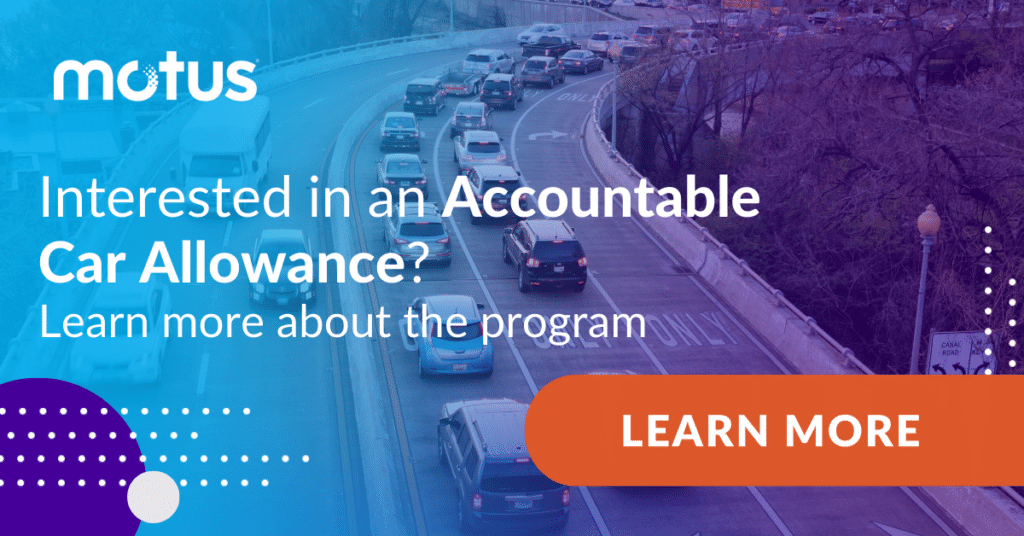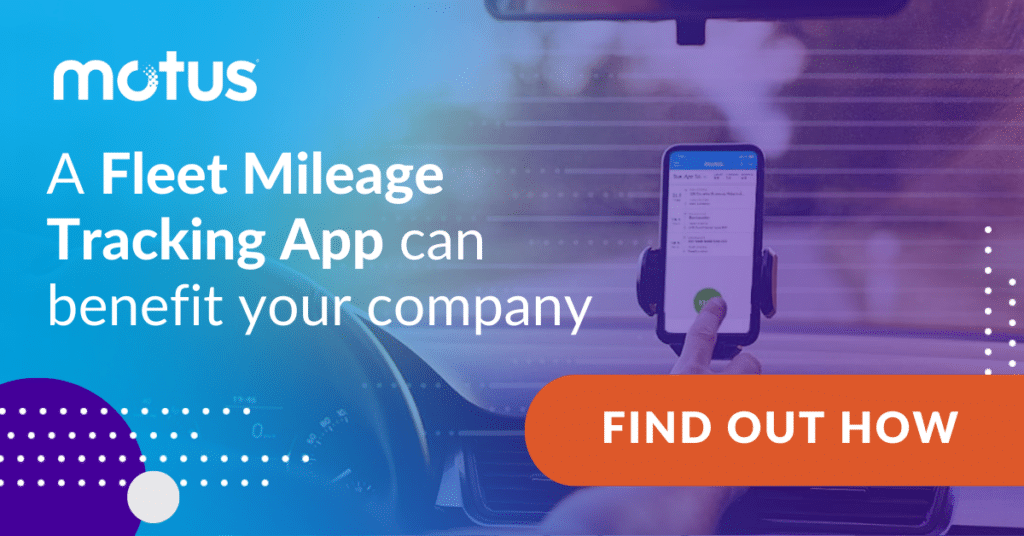If you had to make a list of things essential to your business, how long would it be? What would be on it? More likely than not, business travel makes that list. It certainly accounts for a considerable portion of the budget. While it varies from business to business, company mileage can certainly add up. One reason for that is inaccurate mileage reimbursement. So how can you increase company mileage accuracy? Let’s start by acknowledging what’s going wrong.
Why do companies want to keep track of company mileage?
There are handful of reasons for a business to have their driving employees record their company mileage. One is IRS compliance. Another is labor law compliance. Another is accurate reimbursement. Each of these reasons can influence a company’s decision to roll out a particular vehicle program. Which vehicle programs does this apply to? Let’s have a look, beginning with company-provided vehicle programs.
Company-Provided Vehicle Program
A company that offers fleet vehicles doesn’t need employees to capture company mileage, do they? Actually, because the IRS considers company-provided vehicles a taxable benefit, they do. Companies may just charge employees a flat rate at the end of the year as a personal-use chargeback, but this exposes them to risk. It also punishes those who don’t drive their fleet vehicle as often as others. More and more, companies have been adopting a fleet mileage tracking app to make sure personal-use chargebacks are compliant and accurate.
Accountable Allowance
Under a typical allowance plan, employees simply receive the same monthly stipend, regardless of the miles they’ve driven. But, because this payment isn’t tied to the miles employees put on their personal vehicles, the IRS considers it “additional income.” That makes it taxable. Enter the accountable allowance plan. Employees record their company mileage and submit this amount at the end of each month. When their stipend comes through, it’s no longer taxed as additional income. In fact, the only way this payment is taxed is if they amount they receive is greater than the IRS mileage rate.
Mileage Reimbursement
Many companies who reimburse employees for the business use of their personal vehicles use a mileage reimbursement. Also referred to as a cents-per-mile (CPM) reimbursement program, this requires employees to record their company mileage in mileage logs. At the end of each month, driving employees send these mileage logs to their employers. The employer will then provide them with a reimbursement that pays them cents per each mile driven. This cents-per-mile rate is generally the IRS mileage standard.
What’s the IRS Mileage Standard?
Every year, the IRS announces next year’s IRS mileage standard. This rate takes into account the costs of vehicle ownership. Prior to the TCJA, employees could use this rate to deduct company mileage from their personal taxes. As that is no longer an option, employees must depend on their employers for a fair reimbursement.
The IRS mileage standard also serves as a threshold. Companies can reimburse their employees up to the IRS rate for each mile traveled without that reimbursement being considered taxable income. If a company reimburses above the IRS rate it’s considered additional income and is taxable.
What are so many companies doing wrong?
Companies may see the newly announced mileage rate and establish it as the reimbursement rate for the following year. However, this is not what the IRS rate was established for. In fact, most companies reimbursing at the standard mileage rate are over-reimbursing their employees.
What’s more, too many companies are depending on unreliable and inefficient manual mileage logs. This form of tracking company mileage often exposes companies to mileage fraud and potential IRS audit.
What can my company do differently?
First, following the IRS mileage rate generally means over reimbursing. Companies should establish mileage reimbursements that consider the regional differences in the costs of vehicle ownership. Arriving at the right number may not be simple for a business that doesn’t have expertise in vehicle reimbursement.
Second, businesses can save employees time and remove the risk of mileage fraud and IRS audit with automated mileage tracking. Using a mileage tracking app, employees can enter the appropriate information, set it to go and let the software do the rest. End users can then easily submit digital receipts from wherever they are.
Fixed and Variable Rate Reimbursement (FAVR)
The fourth vehicle program that requires the recording of company mileage is the fixed and variable rate (FAVR) reimbursement program. This program is a lot more specific to the employee driving their personal vehicle for work. Why is that? Let’s take the IRS mileage rate as an example.
As mentioned above, companies that use the IRS mileage rate often over reimburse their employees. This is because the IRS mileage rate is one number being applied to driving employees all across the country. And costs to drive a vehicle vary from state to state, and even city to city.
What sets the fixed and variable rate reimbursement apart is how specific it is. Employees receive reimbursement for both the fixed and variable costs of using their car. With the right vendor, these rates are calculated specific to each mobile worker. Let’s look at an example.
National Distributor Reimbursing Company Mileage
Carl works for a national food and beverage distributor. He’s set up in Augusta, Georgia and spends a lot of time driving from place to place. Seasons can impact how much he drives, but this month he received a reimbursement of $658.92. Now let’s meet Hannah. Hannah, works for the same company, only she’s based in San Francisco, California. Hannah has the same role as Carl. In fact, by some miracle of coincidence, she also drives the same vehicle and the exact same number of miles this month. Her reimbursement is $857.23. Why? The answer is easy.
Even though Carl and Hannah record the same amount of company mileage on the same vehicle type in the same month, the driving costs in the area they work in are different. Carl’s gas is $2.84 a gallon, while Hannah’s is $4.98. The price of maintenance, registration and insurance are all higher in Hannah’s location than Carl’s. That means the cost of operating their vehicles is different. Considering all of this, it makes sense for Hannah to receive a larger reimbursement.
What comes next for your company?
Figuring out what to do next can be difficult. Does your company need an app to capture company mileage? Or is a new vehicle program the right answer? We’ve helped thousands of businesses figure out what comes next with their vehicle program. This case study is just one example. If you’re still looking to better understand your vehicle program options, you can learn more in our post, Vehicle Programs: The Guide to Vehicle Reimbursement Programs.









